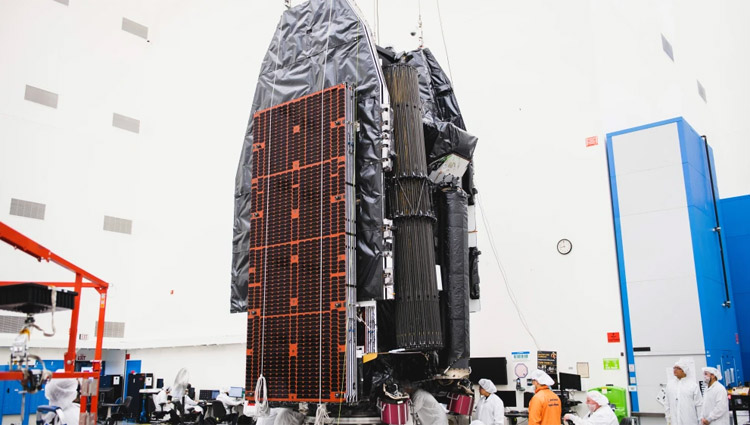INDIAN ARMED FORCES CHIEFS ON OUR RELENTLESS AND FOCUSED PUBLISHING EFFORTS

The insightful articles, inspiring narrations and analytical perspectives presented by the Editorial Team, establish an alluring connect with the reader. My compliments and best wishes to SP Guide Publications.

"Over the past 60 years, the growth of SP Guide Publications has mirrored the rising stature of Indian Navy. Its well-researched and informative magazines on Defence and Aerospace sector have served to shape an educated opinion of our military personnel, policy makers and the public alike. I wish SP's Publication team continued success, fair winds and following seas in all future endeavour!"

Since, its inception in 1964, SP Guide Publications has consistently demonstrated commitment to high-quality journalism in the aerospace and defence sectors, earning a well-deserved reputation as Asia's largest media house in this domain. I wish SP Guide Publications continued success in its pursuit of excellence.
- Indian Air Force Aims for Full Indigenous Inventory by 2047 — Air Chief Marshal A.P. Singh
- Rajnath Singh assumes charge as Defence Minister for the second consecutive term
- Interim Defence Budget 2024-25 — An Analysis
- Union Defence budget 2024
- Prime Minister Modi Flies in the LCA Tejas
- New Chapter in India-Italy Defence Ties
- Airpower beyond Boundaries
Boeing Delivers Powerful Satellite Platform to Viasat
- ViaSat-3 Americas is the first of three satellites to provide high-quality, affordable connectivity to global users
- Boeing integrated Viasat’s ultra-high-capacity payload to its custom-designed 702MP+ platform, harnessing the most power ever on a communications satellite

Boeing delivered the most powerful satellite platform the company has built to date, the 702MP+, a custom-designed spacecraft for network provider Viasat.
“Working with Boeing, we're very excited to complete the ViaSat-3 Americas and bring us one step closer to providing higher speeds, more bandwidth, and greater value to our customers on a global scale whether they be on land, on the sea, or in the air,” said Dave Ryan, president Space & Commercial Networks, Viasat. “The innovation of this satellite allows us new levels of flexibility to dynamically allocate capacity to the most attractive and engaged geographic markets.”
Upon embarking from the Boeing factory in California, ViaSat-3 Americas was flown to the Florida Space Coast where Boeing and Viasat teams will support launch and mission operations as the spacecraft prepares to travel to geostationary orbit, approximately 22,000 miles from Earth. Once in orbit, ViaSat-3 Americas will be the first of three 702MP+ satellites to make up the ultra-high-capacity ViaSat-3 satellite constellation, designed to provide high-quality, affordable global connectivity and coverage.
“We designed, built and delivered the most powerful satellite platform we have ever provided to a customer. The result really is an engineering marvel,” said Michelle Parker, vice president of Space Mission Systems at Boeing Defense, Space & Security. “We expanded the boundaries of our design and the platform components to exceed Viasat’s demanding mission requirements, while ensuring alignment with Boeing’s proven qualification and reliability standards.”
Based on the flight-proven 702 vehicle design hosting the U.S. Department of Defense’s Wideband Global Satellite (WGS) constellation, and more than 40 other high-performing satellites, including ViaSat-2, Boeing’s 702MP+ features all-electric propulsion for the first time aboard a 702MP, providing more sustained thrust and efficiency.
Boeing improved the platform’s structure to support Viasat’s large payload. The platform also accommodates the largest commercial satellite solar arrays Boeing-subsidiary Spectrolab has ever produced, along with batteries and supporting electronics, which generate well over 30 kW of solar power.
The satellite has some of the largest reflectors ever sent to space and will be significantly larger than most geostationary satellites, requiring highly-refined, highly reliable hardware and software to maintain optimal satellite control. In addition to designing and manufacturing the platform, Boeing worked with Viasat to integrate the payload.





